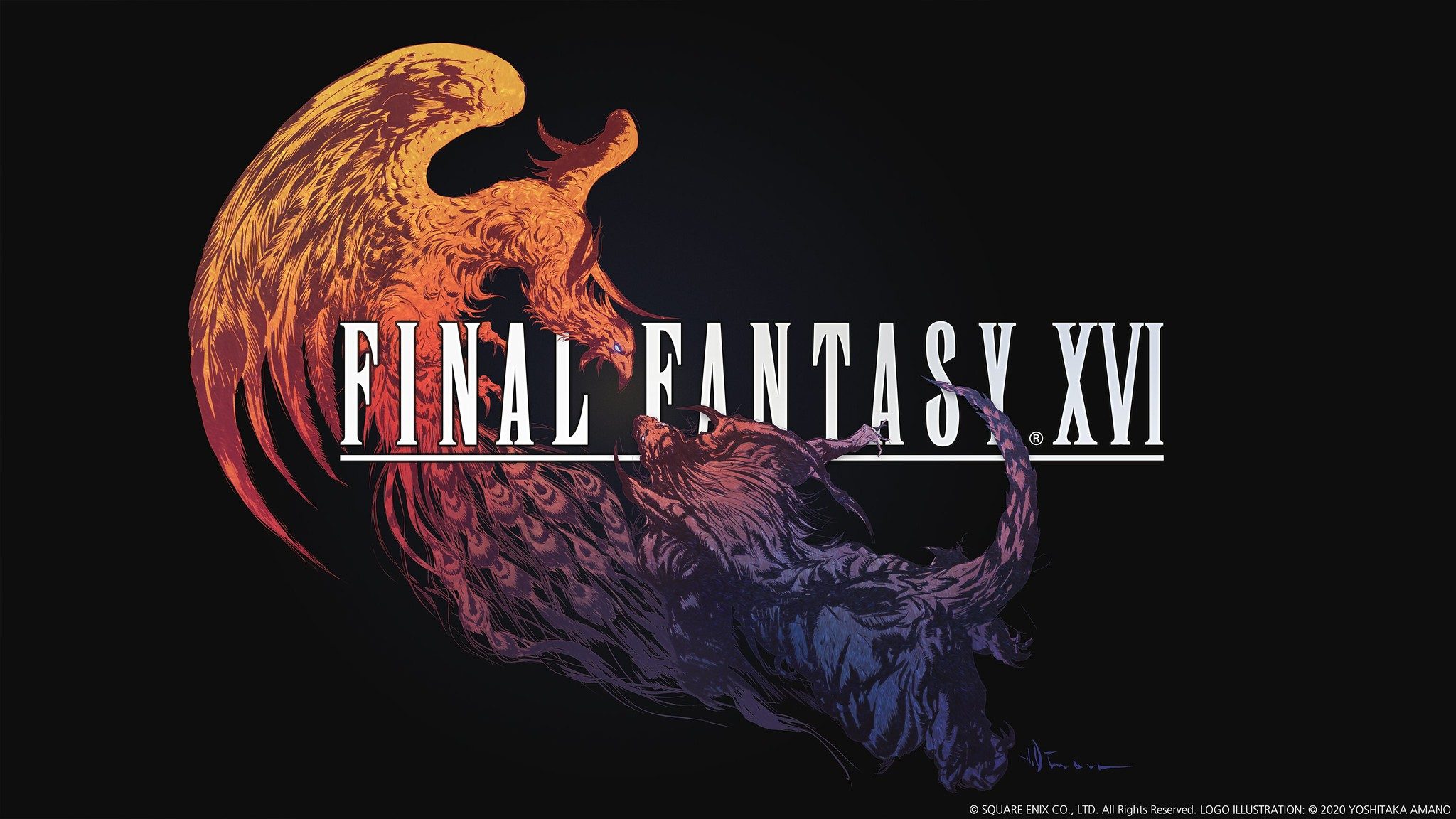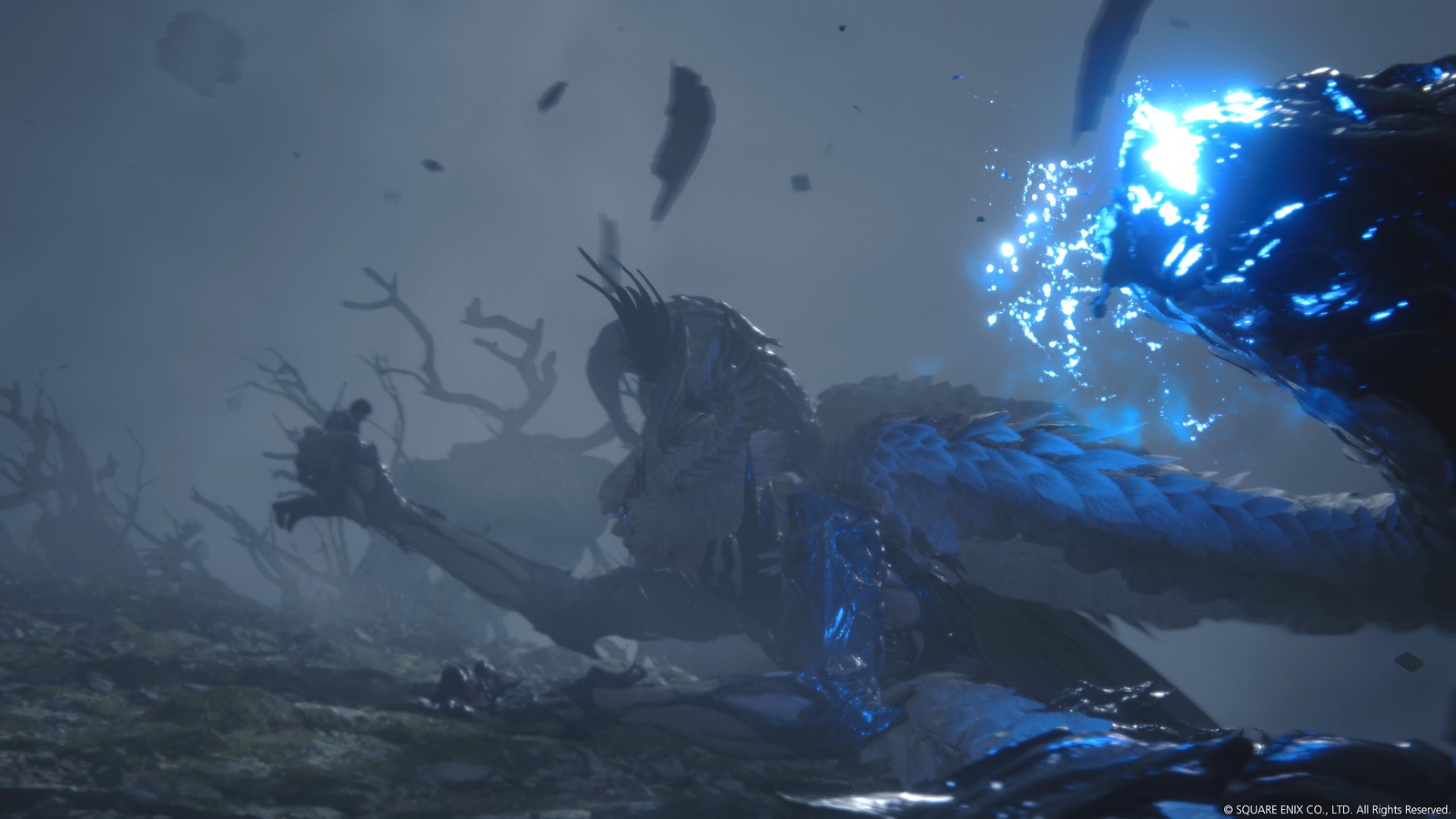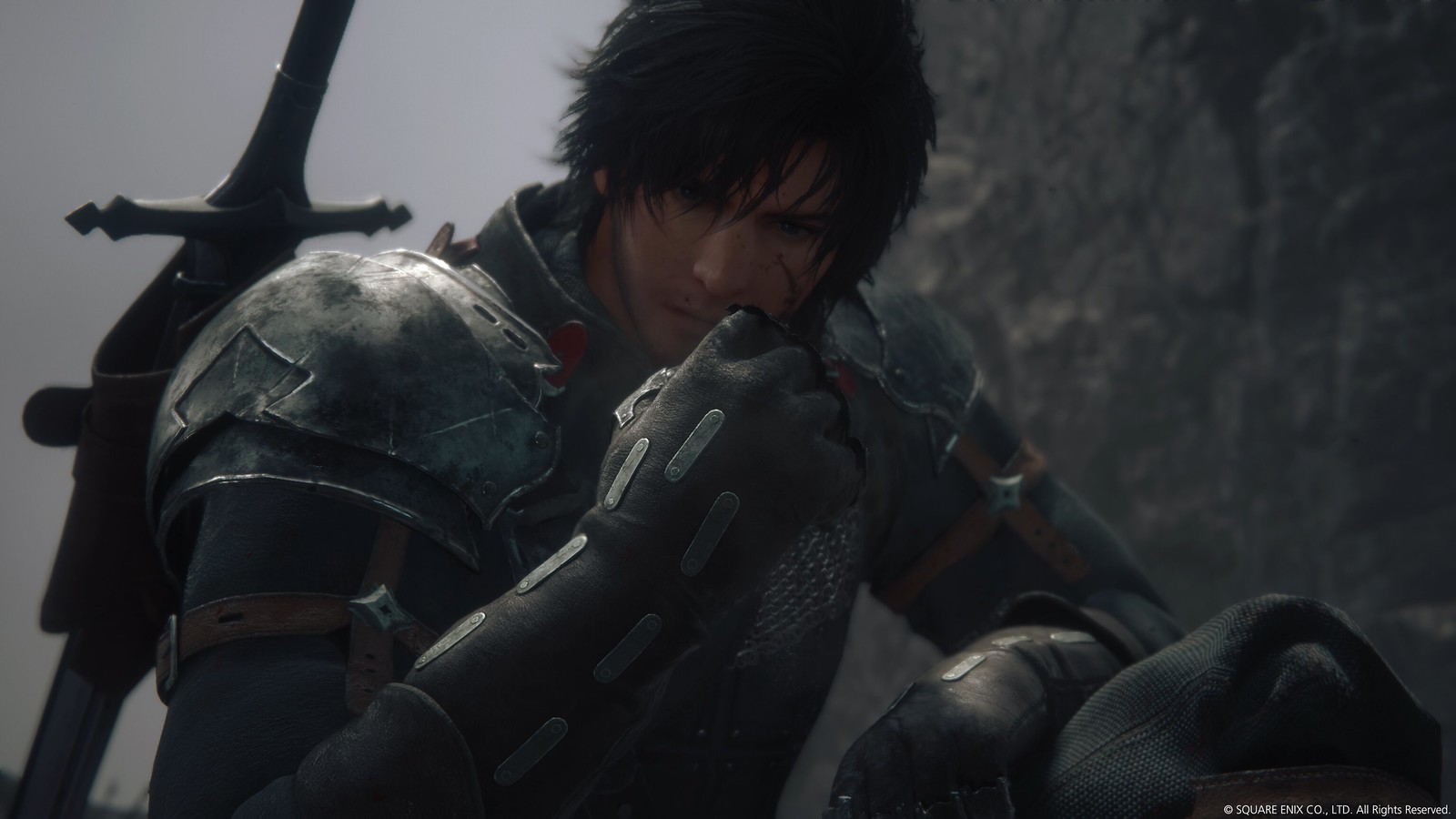Last week, Final Fantasy XVI Producer Naoki Yoshida and Director Hiroshi Takai debuted the game’s newly released trailer, entitled Ambition. In that PS Blog post, they touched briefly on the game’s lore as well as sharing more information about two newly revealed characters.
After that reveal, we had yet more questions. So today, they’re going to dig a little deeper into the world of Valisthea, the Dominants and Eikons. Joined by Creative Director Kazutoyo Maehiro and Localisation Director Michael-Christopher Koji Fox, this interview covers the creators approach to its story, worldbuilding, key players’ motivations, and more.
“The world of Final Fantasy XVI may not be particularly kind or gentle. Still, I think we’ve managed to portray how its people live without abandoning hope – how they struggle, how they stand firm, and how they keep on living.”
– Hiroshi Takai, Main Director
PlayStation Blog: What did you want to achieve in this story that hadn’t been done in a Final Fantasy before?
Hiroshi Takai, Main Director, Final Fantasy XVI: I would say that, in the beginning, the Final Fantasy series set out to create pure fantasy worlds and tell rich stories about the inhabitants of those worlds. The series has gradually built out from that starting point, sometimes trying out elements closer to sci-fi, and delving more deeply into the coming-of-age stories of its youthful characters. As we come to Final Fantasy XVI, just as our players seem to have grown up, the years have taken their toll on us developers, too. The world hasn’t always been kind, and we’ve learnt that you can’t expect everything to turn out well for you. And things don’t always turn out well in the world of Valisthea, either – in many different senses of the word. Its inhabitants all carry their own burdens. That was the kind of world we wanted to show. And so, the world of Final Fantasy XVI may not be particularly kind or gentle. Still, I think we’ve managed to portray how its people live without abandoning hope – how they struggle, how they stand firm, and how they keep on living. So I really want as many people as possible to experience the world of Valisthea. (And of course, it’s not all doom and gloom!)
Can you walk us through the earliest stages of concepting this world? Do you start with the iconic elements you want to include, such as Crystals and Summons, then explore unique takes on those with the Dominants, then that leads organically to warring nation states etc?
Kazutoyo Maehiro, Creative Director & Original Screenplay, Final Fantasy XVI: From the very start of the project, we had decided that Final Fantasy XVI would focus on the Eikons. Summons are an important element of the Final Fantasy series as a whole, so I thought that if we were going to show the Eikons, we should make sure they were properly woven into the story instead of merely being spells or skills.
That was what led me to start thinking about the question, “Say there was a world where Eikons actually existed – what kind of world would that be?” It would have to be a world where it would be natural to see a giant Summon with your own eyes, and it would have a corresponding history.
The next steps are mostly about how I personally approach the creation of a story. I started by creating the world map, and from there, I built up the environment of the world: establishing the flow of the winds and rivers, the ocean currents, and the placement of cities. With this as my base, I added in the iconic elements from the Final Fantasy series – including the crystals – and other elements unique to Final Fantasy XVI that arose from its overall structure, writing the history of the world as I went. Once all this is complete, we finally arrive at the starting line for the story. After that, I created a narrative that would always keep Clive (= the player’s avatar) at its nexus. I took care to ensure that he really feels like the protagonist, not just one character among multiple storylines.
“Yoshida-san’s core design concept for XVI has always been a “rollercoaster,” so a mixture of slow, building ascents, followed by thrilling freefalls is a good way to describe how we’ve tried to deliver the narrative.”
– Michael-Christopher Koji Fox, Localization Director
Are there any learnings from structuring and writing FFXIV’s Heavensward storyline and characters that you’ve brought to building out FFXVI’s?
Michael-Christopher Koji Fox, Localization Director, Final Fantasy XVI: Yes and no.
First and foremost, the FFXIV Warrior of Light being a silent protagonist greatly affected how scenes could be written. As a result, most XIV cutscenes involved OTHER people talking TO you, the burden to relay important information falling almost solely on NPCs. For XVI, having Clive be an active part of every conversation changes a lot about how we are able to relay info to the player. Cutscenes are definitely more dynamic in that sense. Also, the addition of high-quality facial capture to a lot of scenes allow us opportunities to relay emotion and meaning via expression rather than actual dialogue.
Differences in genre also affected our approach.
With an MMO such as XIV, it is all about creating a story that you can extend over the two+ years of an expansion cycle. With a standalone game, the resulting narrative needs to be a little more compact and streamlined. When that standalone game is heavily action focused (as opposed to a traditional slower-paced RPG), narrative tempo becomes doubly important. While political intrigue can be exciting, it tends to be complex, and require a lot of explanation which can slow things down. Leaning too much on intrigue and complexity sometimes causes you to lose sight of the bigger picture, and the game can suffer because of it. As we are creating something that is interactive, we wanted there to be a good balance. Yoshida-san’s core design concept for XVI has always been a “rollercoaster,” so a mixture of slow, building ascents, followed by thrilling freefalls is a good way to describe how we’ve tried to deliver the narrative.
That Dominants are viewed differently depending on their home nation – be they venerated or forced into being weapons of war – makes for rich storytelling potential. What informed your development and choice of how each nation viewed and used their Dominants?
Koji Fox: Making each nation’s attitude towards Dominants different gives us the opportunity to explore how certain things are perceived when viewed through different lenses—something especially relevant in an age where a tendency is to compartmentalize things as either black and white, right or wrong. Because ultimately the Dominants are living, breathing human beings, how they are employed by their respective nations becomes a fairly accurate reflection of how those nations treat their own populace. A nation that treats its Dominant like a pawn, most likely also sees its people as pawns, to be sacrificed in order to save the more important pieces. A nation that fears its Dominant is one that is likely to lash out against all magic users (Dominants and Bearers), whereas a nation that reveres its Dominant is more likely to view its people as equals.
“The way in which the Dominants act according to their human will even after manifesting the Eikons might be something that’s quite distinct about Final Fantasy XVI.”
– Hiroshi Takai, Main Director
Bahamut and Odin are two iconic figures in Final Fantasy mythology who have been interpreted in different ways in previous games. How is the team making FFXVI’s versions distinct from past titles?
Takai: This doesn’t just apply to Bahamut and Odin, but I would say one distinct aspect of Final Fantasy XVI when compared to past installments of the series is the way that humans (Dominants) manifest the Eikons into themselves. Dion, who is Bahamut, and Barnabas, who is Odin, each carry their own burdens in the story, and I think one of the fascinating things about Final Fantasy XVI is how the monstrous forms manifested by the Dominants come to somehow resemble the human characters when you look at them. For the actual appearance of the Eikons, instead of creating a completely new design, we’ve intentionally gone with forms that could be easily imagined from previous iterations. Thinking about it, the way in which the Dominants act according to their human will even after manifesting the Eikons might be something that’s quite distinct about Final Fantasy XVI.
The Eikons may be all-powerful, but their actions are at the behest of their Dominants, and by extension, the nations they fight for. All characters (not just Dominants) believe what they are doing is right. How do you approach fleshing out morally complex characters?
Maehiro: Not everyone treats the Dominants in the same way. Being humans, there are lots of differing thoughts and beliefs. In one country, Dominants may be treated with great respect, like stately guests of honour – while in another, they are treated as slaves. And while there are those who fight for justice, there are those who will only act for their own personal benefit, as well as those who are being coerced to serve against their will for some reason or other. You might think that the Dominants should be able to do whatever they want with the immense power of the Eikons, but using this power comes with the drawback of petrifying the Dominant’s body. This gives rise to turmoil faced by Dominants who cannot act as they wish, as well as shaping the relationships they have with their aligned countries and the people surrounding them. The character of each Dominant has been created by depicting the situation they find themselves in, their personal will and ideology, and the conflict that arises from these factors.
“When [FFXVI composer] Masayoshi Soken heard the sung lines, he and his team decided to handcraft a background lute part for each one…despite the extra work that meant for them because we had recorded the songs acapella and tempo and pitch were all over the place.”
– Michael-Christopher Koji Fox, Localization Director
Who has been your favorite FFXVI character to write and why?
Naoki Yoshida, Producer, Final Fantasy XVI: There are lots of characters in the game, and they all have their own life and destiny – so it’s very difficult to pick one… I imagine this will be the same answer as for Mr. Maehiro, who was in charge of the script, but I would have to say that Clive, the protagonist, is uniquely special. Being our protagonist, the whole development team is united behind pushing Clive forward with all our might. How are we going to shine the spotlight on him? How are we going to give his words weight? Together with Mr. Maehiro, I’ve checked every individual part and made repeated requests for things to be tweaked. As a result, I’m particularly attached to Clive.
Takai: He hasn’t been announced yet, but I like the character of Byron, who appears partway through the story. He’s a character with an extremely likable personality: very cheerful and magnanimous. So I expect a lot of players will end up liking him, just as I do! Unfortunately, I can’t go into too much detail, since it’ll enter spoiler territory, but the scene where he first appears makes me really emotional. When I was initially carrying out the cutscene checks, I found myself tearing up despite myself. I imagine he’ll be announced in future promotional material, so when you see him in the game, think back to this interview, haha.
Maehiro: My favorite character would have to be the main character, Clive. Of all the characters I’ve written thus far, he’s really the character I’ve poured the most feeling into – so much so, I’m not sure I’ll ever be able to write a better character. There are actually lots of characters in the game that I really like but can’t talk about at this point. If I have another interview opportunity after the game has been released, I’ll mention them in my answers, haha.
Koji Fox: There are so many unique characters in XVI, it’s hard to choose (even more so when I can’t actually talk about most here because it would spoil the story). So coming in a, let’s say, close fourth after [redacted]
Final Fantasy XVI will release on PS5 in 2023.







